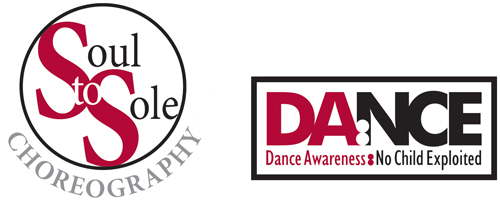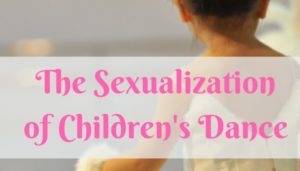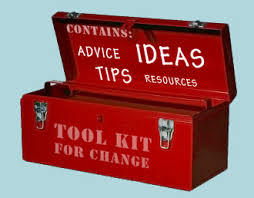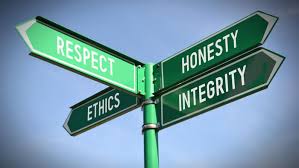Time and time again I hear from concerned parents, grandparents, dancers and community leaders asking what they can do to raise education and awareness around the harmful effects of adult costumes, choreography and music for children. While many of you have probably seen children’s dance that disturbs you, perhaps you didn’t know what you could do about it. This blog focuses on providing a solution to this challenge with the hope that you’ll join me in educating dance studio owners and instructors about the harm hypersexualized dance imposes on children.
If you’ve been following along, this blog is the last in a series designed to help you know how to find a healthy, age-appropriate dance studio for your child. Now, I want to empower you to make a change at your local level by sharing more about the dance studio toolkit. It’s information that I have created to help you educate dance studios/owners about why the hypersexualization of young dancers is not a road to travel. You may think that a dance studio should know this information. However, many don’t. They’re caught up in the objectified cultural tide like many people are. Often, they seem oblivious to the issue. That’s why the hypersexualization of young children is rampant in dance as well as a multitude of other arenas. Sometimes either parents or teachers think that this style of dance is appropriate. But it isn’t. Actually, it’s a trend that all of us need to be informed about and all of us on the DA:NCE Team need to share with others.
So how do you go about the task of educating yourself and sharing research information with a dance studio owner? I have a step by step process that works. First, read the articles below to become informed about the topic.
- Go to danceawareness.com and watch our free presentations to educate yourself on this isssue
- Read ‘Recital Revelations: When it Comes to the Over-Sexualization of Young Girls, We Are the Problem’
- Read the APA report on the sexualization of girls
Next, view the two sample videos below highlighting choreography, music and costumes that hypersexualize children and demonstrate why education and awareness around this issue is critically needed. Note: This content may be unsuitable for some viewers.
- Group dance video
- Solo dance video
We all need to reflect on the following question: Do these videos and others like it demonstrate a healthy view of both the art of dance AND what is good for young children?
The answer is no.
Third, consider starting a local dance petition. What is a local dance petition? It’s simply signatures from other people that want to stop the hypersexualization of children in dance. In addition to you, the signed names will show a dance studio owner that many people are concerned about this issue and want it changed. Use the link below to do so.
Now let’s get practical and sum up the steps for the dance toolkit that you will need to take:
- Discuss the local petition information you have downloaded (including 2 blank signature pages) with several other interested adults; try to involve at least two parents whose children attend a local dance studio. Make sure everyone reads the petition and the accompanying articles carefully. Set a tone of respect and education as you pursue involving others in this petition. Reactive communication does not produce positive change.
- Try to get at least 25 signatures on your local petition before you present it to a dance studio owner. Call the owner and set up a specific appointment time to talk about this petition. Tell them that you want to meet with them to share a concern you have about the hypersexualization of children in dance based on research. Offer to share articles and videos on danceawareness.com ahead of time.
- If the dance studio owner does not have the time or the interest to read this material prior to the appointment, bring some printed material to the meeting. During the appointment time:
- Start out the conversation with positive comments about the art of dance and appreciation for the dance studio that you are targeting.
- Ask the studio owner if they have read the materials about hyper-sexualized dance that you are concerned about. If the answer is no, give them time to read them. If the answer is yes, ask them what they think about the articles and the research.
- Engage in a personal conversation with them and ask if they would consider making sure that they do not allow children under 12 to present dances in adult costumes, music and choreography. Present the signed petition to them showing that others in the community support your effort. Refer them to the information on danceawareness.com.
- Encourage and educate dance studio owners to join YPAD and request their studio certification(ypad4change.org). YPAD studio certification will provide age-appropriate standards for safety in children’s dance.
- Whether or not they agree with your viewpoint, listen to what they have to say. If they are not sure about what you have communicated or if they articulate a negative response, give them the time to reflect. Pursue a follow up meeting to answer questions. Sometimes all someone needs is time and education to change their mind.
- Contact your local newspaper and ask them to write an article about the hypersexualization of children in dance; include the petition, the research on this issue, and the danceawareness.com website so that others can be educated on this issue. Make sure that the local article directs the readers’ attention to the dance studios that agree with the petition. If it is hard to get a response from a reporter, submit a letter to the editor sharing this information.
- Let DA:NCE know about what’s happening in your town by emailing Mary Bawden at mary@soultosolechoreography.org. Join the Dance Coalition to receive free updates about the hypersexualization of children in dance. Together, we can make a difference! Let’s put an end to the creation of adult, sexual choreography, lyrics and costumes for children under 12.
Before I leave you, remember this: When dance educators use age-appropriate skills, the research shows that children’s dance affects motor, brain and creative development with incredibly positive results.



